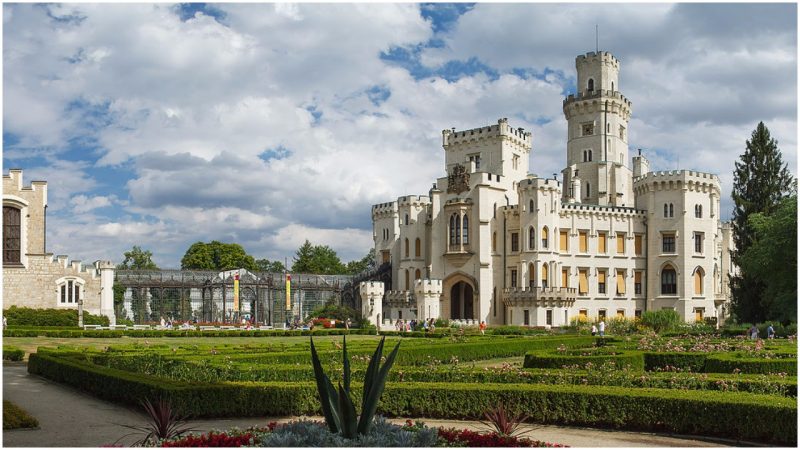The south of Bohemia is notable for its small and charming towns. One town, in particular, is famous for its fairytale castle. It is one of the most beautiful not only in the Czech Republic but all of Europe. Set at the top of a hill, Hluboká Castle has beautiful views of the towns of Hluboká and Vltavou as well as the surrounding landscape.
However, the castle is not famous only for its beauty, but also for its long history. It was rebuilt a couple of times, according to the wishes of successive owners. The first construction on the site was a Gothic castle built in the 13th century by Přemysl Otakar II, who was known as the Iron and Gold King. But the castle became a significant site once Jáchym of Hradec, the highest chancellor of the Czech Kingdom, acquired the property in the 16th century.
He decided to completely transform it into a Renaissance castle. An important element of every Renaissance castle was the garden and Hluboká Castle was to be no different. Jáchym of Hradec added three courtyards and constructed a chapel whose interior walls were beautifully painted with scenes from the Bible. Prominent Italian artists and some of the best-known craftsmen in the region were commissioned for this project.
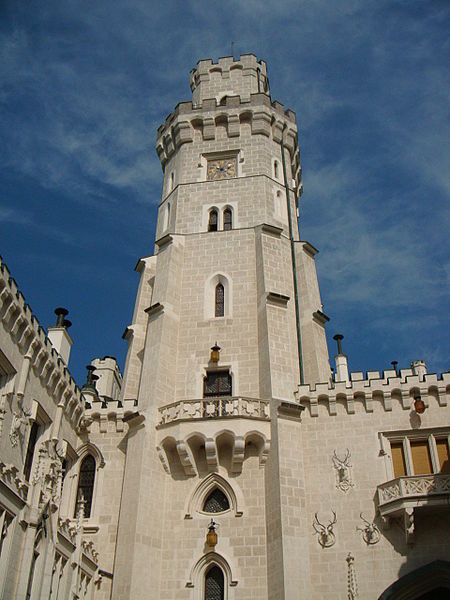
CC BY-SA 3.0
After the unexpected death of Jáchym of Hradec, the construction of the castle and its gardens were continued by his son, Adam II. Once it was completed, the castle and its garden became a popular place for socializing among the nobility. But soon afterward, the castle was plundered and damaged on two occasions. Then, in the 17th century, Jan Adolf I of Schwarzenberg acquired the property and his grandson Prince Adam František initiated the reconstruction of a new castle towards the beginning of the 18th century. He was determined to build the castle in the Baroque style and commissioned the prominent Czech architect Pavel Ignác Bayer.
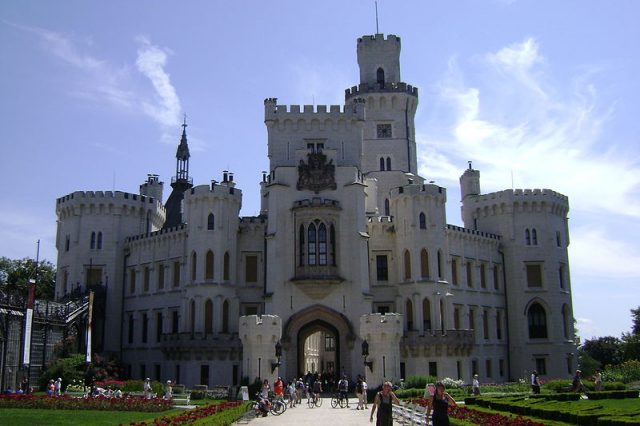
CC BY-SA 3.0
That castle did not last long either. In the 19th century, Johann Adolf II of Schwarzenberg and his wife, Eleonora, Princess of Liechtenstein, were not satisfied with the existing Baroque residence and decided to rebuild it. The couple had visited England on several occasions and admired the architecture they encountered, particularly the Tudor and Elizabethan style. When asked about the design of the new castle, the princess said it was to be “built in the Gothic (Tudor) style of the Royal Windsor Castle.”
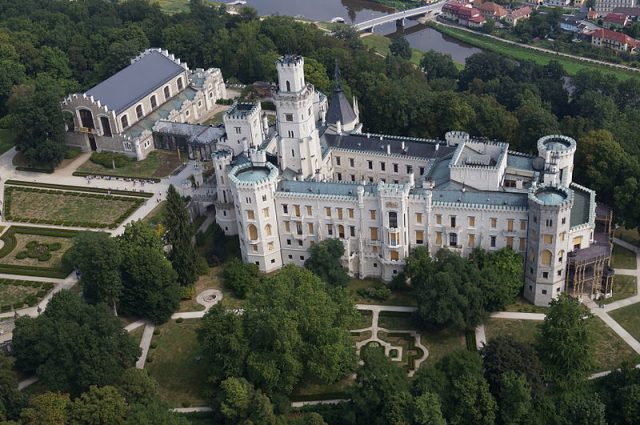
CC BY-SA 3.0
The couple entrusted the project to the Viennese architect Franz Beer, but after his death, D. Deworetský completed the work in 1871. The princess was very much involved in the interior decoration of the castle. Carved wood paneling is present in almost every room, which is unsurprising, given that she was fascinated by the Elizabethan style.
The princess also added the elaborate chandeliers, the Schwarzenberg coat-of-arms, and the impressive paintings, including a portrait of Holy Roman Emperor Rudolf II. The castle hosts the largest and most beautiful collection of rare Flemish tapestries in the region.
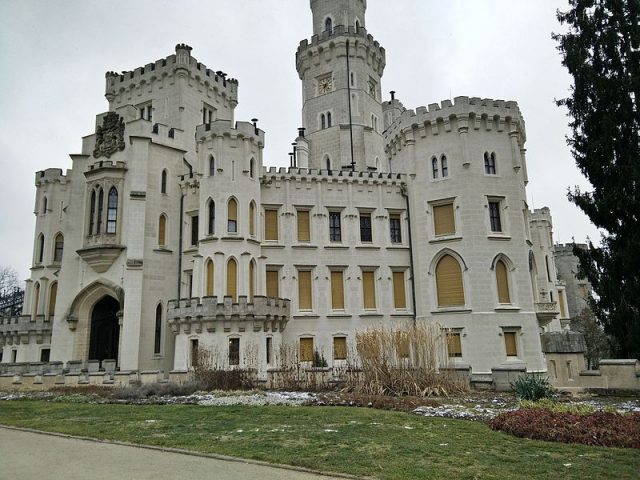
CC BY-SA 3.0
The garden was also transformed into an English landscape garden. To enlarge the garden, the existing disused farm was demolished and planted with trees and shrubs. Although it is considered a beautiful example of a Bohemian castle today, not everybody thought well of it at the time. The Czechs argued that English architecture wasn’t suitable for the Bohemian region and questioned the taste of the princess.
Hluboká Castle was not a permanent residence of the Schwarzenberg family, although they visited it often. It remained in their possession until the beginning of the World War II. The Nazis confiscated it, and the last owner, Prince Adolf Schwarzenberg, managed to escape to the United States. When the war ended, the castle became the property of the state. Today, this romantic castle in Bohemia is the second most visited in the region.
